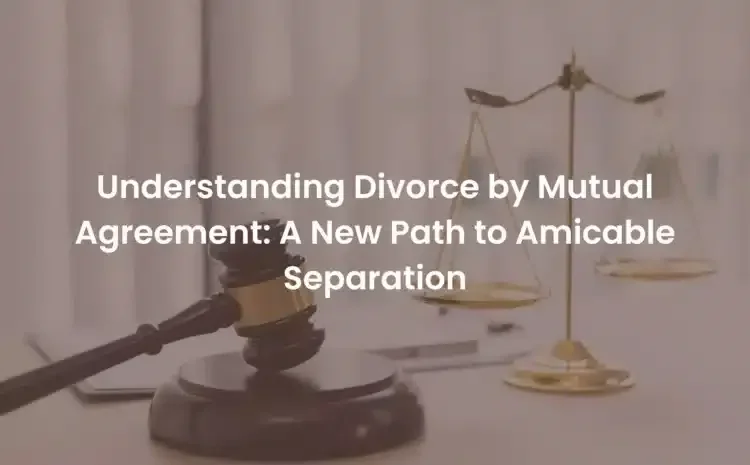Understanding Divorce by Mutual Agreement: A New Path to Amicable Separation
In the realm of family law, divorce has often been synonymous with lengthy legal battles, emotional turmoil, and financial strain. However, a recent legislative development aims to redefine this narrative: Divorce by Mutual Agreement (DMA). This innovative approach offers couples a more straightforward, less contentious way to dissolve their marriages, fostering cooperation and reducing the adversarial nature of traditional divorce proceedings.
What is Divorce by Mutual Agreement?
Divorce by Mutual Agreement (DMA) is a legal process that allows couples to dissolve their marriage through mutual consent without the need for contentious court battles. This method emphasizes collaboration and agreement between the spouses on key issues such as asset division, child custody, and support arrangements. The goal is to streamline the divorce process, making it faster, less costly, and less stressful for both parties.
Key Features of DMA
Mutual Consent: Both parties must agree to the divorce and all related terms. This includes the division of assets, child custody, and financial support. The absence of disputes over these matters is a cornerstone of DMA.
Simplified Legal Procedures: DMA typically involves fewer (close to zero) court appearances and less paperwork. In many cases, the process can be handled through mediation or direct negotiation between the spouses, with minimal involvement from lawyers and judges.
Time and Cost Efficiency: By avoiding prolonged legal battles, DMA can significantly reduce the time and financial resources required to finalize a divorce. This can be particularly beneficial for couples looking to move on with their lives more quickly and with less financial burden.
Emotional Well-being: DMA promotes a more amicable separation, which can help minimize the emotional distress often associated with divorce. This approach can be especially advantageous for couples with children, as it fosters a more cooperative co-parenting relationship post-divorce.
How DMA Works
The DMA process typically follows these steps:
Agreement on Terms: The couple discusses and reaches an agreement on all relevant issues, such as asset division, child custody, and financial support. This can be facilitated through mediation or direct negotiation.
Drafting the Agreement: Once an agreement is reached, it is documented in a formal written agreement. This document outlines all the terms and conditions agreed upon by both parties.
Filing for Divorce: The agreement is then submitted to the court along with a joint petition for divorce. This step may require minimal court involvement, depending on the jurisdiction.
Court Approval: A judge reviews the agreement to ensure it is fair and in compliance with legal standards. If the judge approves, the divorce is granted without the need for a trial.
Benefits of DMA
Reduced Conflict: By focusing on mutual agreement, DMA helps reduce the conflict and hostility that can arise during traditional divorce proceedings.
Faster Resolution: DMA can significantly shorten the duration of the divorce process, allowing both parties to move on with their lives more quickly.
Cost Savings: With fewer court appearances and reduced reliance on legal representation, DMA can be a more cost-effective option for many couples.
Preservation of Relationships: DMA encourages cooperation and communication, which can help preserve a more positive relationship between ex-spouses, particularly important for co-parenting.
Considerations and Limitations
While DMA offers many advantages, it may not be suitable for all couples. It requires a high level of cooperation and communication, which can be challenging in cases involving significant conflict or power imbalances. Additionally, couples with complex financial situations or contentious custody disputes may still require more traditional legal intervention.
Conclusion
Divorce by Mutual Agreement represents a significant shift in how society approaches the dissolution of marriage. By prioritizing mutual consent and cooperation, DMA offers a more humane and efficient alternative to traditional divorce proceedings. For many couples, this new approach can pave the way for a more amicable and less stressful end to their marriage, allowing both parties to embark on the next chapter of their lives with greater peace of mind.
As DMA becomes more widely adopted, it holds the promise of transforming the landscape of family law, offering a model that prioritizes the well-being of all parties involved. If you are considering divorce and believe that DMA might be the right choice for you, consulting with a family law professional can provide valuable guidance and help ensure that the process goes as smoothly as possible.

